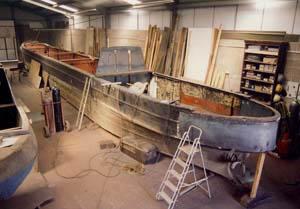What would be the best type of lighting for a large fabrication shop or workshop?
A freind of mine owns a boat yard where they build narrowboats, there unit is around 120*60ft (26*18m) and currently poorly illuminated with around 10 6ft striplights. During summer its find as there are clear sections in the roof but its now coming round to winter when its gloomy at best.
In my mind it is toss up between mercury vapor fixtures or metal halide floodlights, although they have re-lit a large area at work with clusters of floresent tubes but my experience is limited so Im interested if there is anything else to consider, as well as how many lights would be needed and the best way to arrange them.
Daniel
A freind of mine owns a boat yard where they build narrowboats, there unit is around 120*60ft (26*18m) and currently poorly illuminated with around 10 6ft striplights. During summer its find as there are clear sections in the roof but its now coming round to winter when its gloomy at best.
In my mind it is toss up between mercury vapor fixtures or metal halide floodlights, although they have re-lit a large area at work with clusters of floresent tubes but my experience is limited so Im interested if there is anything else to consider, as well as how many lights would be needed and the best way to arrange them.
Daniel



